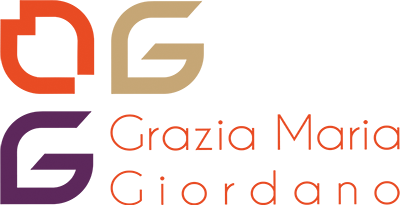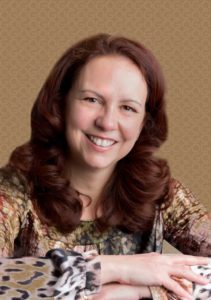Here is a new blog from the “What if it’s a movie” series. This newcomer piece is inspired by one of the hottest topics in the management landscape: leadership and what being a leader means in today’s context.
In particular, I’d like to talk about one specific kind of leadership that I’ve come to call “Human-centric Leadership”. For me, this kind of leadership is perfectly represented in the stories of the medical drama “New Amsterdam”, whose Season 1 is currently streaming on Netflix in Italy.
The New Amsterdam series gets its name from the hospital where it takes place. As we learn at the start of the pilot episode, New Amsterdam hospital is the first public hospital in the United States; the first C-section ever was also performed there. New Amsterdam has its own school, Court of Justice and even a prison ward: a city in the city which never sleeps.
The main character of the series is Dr Max Goodwin MD. He’s been newly appointed as Medical Director of the hospital. He was previously in a Hospital in Chinatown, which he turned upside down, dramatically improving its operations.
And Max is the main character also of this blog because, since his appearance in the first minutes of the pilot episode, he shows characteristics and traits that make him a real outlier in the traditional medical panorama:
-He won’t act as he’s expected to.
-His leadership style is entirely different from anything people at the hospital have known so far.
-And he’s going to set in motion a transformation that none had seen coming.
Max’s embodies what I call the “Human-centric Leadership” style, i.e. a kind of leadership that brings people and their needs and motivations to the center of their action. By such, he manages to transform the organization and its innovation capabilities profoundly.
Before we delve into Max’s story and his Human-centric Leadership style, let’s stop for few minutes to reflect on the leadership concept.
What’s leadership?
Should you ever google the word leadership (like I did when writing this blog!), you’ll get more than 700 million results! Should you ever research further, you’ll find out so many different concepts and definitions.
By looking and reading more in-depth, I’ve found the following definition further relevant and helpful to explain what a leader is (and needs to be) in today’s context.
Leadership is
“wanting to do something new and better, and getting others to go along.”
This definition emphasizes that leaders are there to improve things (business, processes, tasks), not for the sake of being there and keeping the status quo. And it’s not leadership if the rest of the organization stays behind and doesn’t follow.
In its simplicity, this definition of leadership stresses two critical facts: improvement of something and relationship between the leader and other people in the organization.
And it’s the second aspect that is particularly interesting to me.
This definition makes it apparent that leadership doesn’t happen in a vacuum, but leadership exists if others get along. So, the relationship between the leader and the other organization’s stakeholders is critical for success.
This definition offers little room to the hero that sole-handed can change the fate of an organization just thanks to charisma and inspirational vision. This definition asks for the leader to establish deeper relationships with his/her colleagues and stakeholders.
By having this clear, we can appreciate better the kind of leadership that Dr Max Goodwin offers in New Amsterdam: Human-centric Leadership.
So let’s move on!
Welcome to New Amsterdam!
Human-centric Leadership at New Amsterdam Hospital
Human-centric leadership enriches the concept of leadership, which I’ve explored above, by moving forward on the “How”, the mindset, and approaches that human-centric leaders use in their activity.
I’ve identified several traits that make Max Goodwin a perfect example of “Human-centric Leadership.”
Trait #1 – One of them!
The first thing that sets Max apart from any other Medical Director is that he wears his scrubs.
Everybody immediately notices this: he’s wearing scrubs and not a tie and a suit: so unusual!
This could be seen as a minor thing, but it gives away much of who Max Goodwin is and his philosophy. It says that he’s a doctor and is there to take care of patients, even from his Medical Director position.
It’s a sign of his values and what is important to him (patients!).
It bridges the distance between him and the patients and between him and the other doctors in the hospital.
It also says that he’s ready to get his hands dirty; he won’t spend his time sitting in an office surrounded by paperwork. He doesn’t want to be seen as a superior being but one of the doctors taking care of patients: they’re there together for a higher purpose.
How many things simple scrubs can tell!!
In my view of leadership, the following is critical: leaders are hands-on; have to be close to the rest of the organization to ensure better interpersonal relationships and build trust. This helps to strengthen the organization and allows it to navigate better the VUCA world we live in. I’ve experienced the value of having such a kind of boss in my professional life, and it was essential to my growth as a person and manager.
Trait #2 – Patients (People) first!
Max’s first meeting with the doctors of the hospital couldn’t be more disorienting. After telling a story about his emotional link with the hospital, he fired the whole cardiothoracic surgical department. The reason for doing that is immediately offered: the surgeons have given priority, over the years, to billing unnecessary surgeries to unaware patients. In Max Goodwin’s eyes, there couldn’t be worse sin. For Max’s, patients always come first. Their health, their well-being takes priority even over money and profit.
We are all aware of the tremendous pressures put on the financial sustainability of health systems, particularly in the United States, where private insurances play a crucial role. But Max is adamant, and it proves so in every single episode, where it always tries to find solutions that fit the patients’ needs even over costs.
For Max, “patient centricity” is a mantra that leads his actions every day.
Further to this, by making his purpose & values very clear, he also offers a clear path for those working with him.
Patient centricity can be easily translated in other industries as “client-centricity” or, more generally, “human centricity”, which is at the core of Human-centered design approaches and Design Thinking.
For a Design Thinker like me, Max’s Human-centric approach couldn’t be ignored!
Human-centricity is a crucial trait of what a modern leader should be. Human-centricity means seeing a person as a whole. This helps build profound knowledge of both clients and co-workers, from where real growth and innovation can spring.
In a world where everyone seeks a more personalized and customized experience, human centricity is the key to produce the goods and services people need and want as it creates the right level of openness in the organization that allows it to capture.
Human centricity creates more open organizations, ready to capture the trends coming from the outside. These organizations will be prepared to address the challenges presented by today’s world.
Trait #3 – Ask questions
This is probably one of the traits that I appreciate most in Max Goodwin’s character. Again, he sets the tone from the beginning. We’re all used to newly appointed leaders at their first “public” appearance announcing their big plans and the things they want to do. They know what needs to be done!!
Well, Max shows his fellow doctors a different path. After explaining his position (patients come first!), he flips the cards on the table by asking a straightforward question: “How can I help?”.
In the beginning, the Chairs of the different departments stay silent, not knowing what this question means. And then they find a bit of courage and one by one they put on the table their needs and ideas (healthy food for the patients, a different way of organizing the work in the Emergency Department etc.) and Max answers loud and clear “Yes!!”.
Asking (the right) questions is, for me, one of the most critical qualities in the leader of the XXI century. Traditional leaders are there to impart knowledge and wisdom.
But is this what we need in today’s world?
I don’t think so!
Today’s world is changing at such a fast pace, and new knowledge is created every second. I find it very difficult that a single person, even one with great experience and expertise, can have all the answers.
Today we need a completely different breed of leaders who humbly ask their co-workers what they need to succeed. By doing so, they can leverage the incredible knowledge already present in the organization and leverage collective intelligence and then work hard to remove all the obstacles.
Trait #4 – Show vulnerability
This trait emerges during a very critical situation the hospital goes through:
New Amsterdam Hospital is, in fact, on the verge of chaos.
In the 4th episode of season 1, cases are being directed towards them due to the shutdown of the Emergency Department of another hospital in the area. When the news of the unavailability reaches New Amsterdam, Max makes a brave decision: New Amsterdam will accept all the cases that will arrive. Other hospitals are too far away, and people could die on the ambulances. The decision is made amidst a doubtful team of doctors recommending a different course of action.
Soon the situation gets barely manageable, and all the hospital departments are under extreme pressure.
On the edge of the abyss, Max calls a meeting with his colleagues and says: I made a mistake! I know I made a mistake, now, please, help me solve the situation.
Many leaders and I bet that we all know at least one, would have simply asked others to solve the problem. They would have created a “crisis committee” and maybe also tried to find a culprit to blame.
Max does it differently. He admits his mistake and takes responsibility for it, and by showing his vulnerability, he set the tone for the kind of relationship he wants with his fellow doctors. By showing up, he says: Hey!” I’m human, I can make a mistake! I can fail! Can you help me now?” and he reaffirms his humanity.
Vulnerability is one of the critical skills that modern-day managers should master. It helps create a connection with others, helps building trust, and lays the foundations for fruitful collaboration. The work of Brené Brown on the topic is a can’t miss in the bookshelves of the leader who want to thrive in the modern world!
Trait #5 – Inspire people with storytelling
Max’s use of storytelling is masterful!
Already in the first episode, it gives excellent proof of it. At the first meeting with the doctors, he tells his story that links him profoundly with the hospital.
At that time, only 9, his sister had died in the hospital for a hospital contracted infection. Something that could be avoidable and that he worked his whole life to prevent from happening to anyone else. The doctors’ reactions are telling: on their faces, it shows how touched they are by this story.
There’s another occasion, on episode 17 of season 1, Max uses the power of storytelling.
The biggest snowstorm of the last 30 years is coming down on New York. The hospital is bursting at its seams. People are coming in even only to seek refuge from the inclement weather. A power outage makes the situation even worse: imagine several hundreds of people forced to close proximity in a hospital with no light and no heating!! But the Operating Rooms patients are worse off: especially one with severe injuries in need of blood. And the blood bank is not accessible.
And it’s Max again who calls the shots and, in a very inspirational speech, invites the people nervously crowding the hospital corridors to think about what they want to do about that night.
“In a few years”, he prompts the crowd, “you can think of that night as a night when you were hungry and bored or a night when you have leaned in and helped someone in need”.
Needless to say, he found several volunteers who could donate their blood to the patient undergoing surgery.
The use of storytelling is another key skill that characterizes Human-centric leadership. Storytelling is a powerful tool to enhance the quality of communication within any organization. When telling a story, a deep empathic connection between the listener and the storyteller comes to life, which allows the message to pass more effectively.
On the other hand, the listener is an active participant in storytelling.
Storytellers and listeners live in a shared space where their reactions and emotions feed and support each other.
This concept is very well presented by Stephen Denning, one of the fathers of organizational storytelling, i.e., storytelling within an organization. He introduces the idea of the “Interactive leader“, who, among others, use storytelling to persuade around an idea, to share a vision, or to communicate their values. All things that our Max Goodwin is a real master at!
Trait #6 – Break the trade-off between people well-being and costs.
Together with the “patient first!” mantra, for me, this is the second most important quality that emerges from New Amsterdam.
On several occasions, Max seems not to play by the book and comes up with the most unusual solutions to a problem.
To prevent the bankruptcy of patients who cannot pay their hospital bill (a problem that’s quite critical in the US), he proposes the patients a sort of barter. They’ll work for the hospital to repay their bills.
In another episode, he builds a clinic in the Brooklyn suburb to cater to the health and well-being of its population by simply redirecting the employees of the hospital who seem to have obsolete jobs, and that would be fired in the absence of alternative solutions.
In both cases, he shows creativity that goes beyond the more traditional approaches. Still, above all, he shows how people well-being and costs don’t necessarily represent a trade-off and that they can be pursued and achieved together.
Corporate life is traditionally full of trade-offs: between client satisfaction and costs, between employee satisfaction and costs. In other words, efficiency and personalization are always in constant tension with each other. The common perception is that if an organization wants to make its clients happier (which might mean a better product, a more customized experience), this will cost more!
But is this really true?
Max proves that wrong!
Max uses a Human-centric approach that allows him to go beyond the façade, and immerses himself deeply in his patients and stakeholders’ experience and will enable him to find original & innovative solutions that solve a problem and make money. A real example of how powerful Human-centricity can be.
Trait #7 – Get personal
This is another exciting trait of Human-centric Leadership.
Max’s innovative behavior doesn’t stop at wearing scrubs but goes beyond.
You never see him sitting at his office desk. He’s always around the hospital, talking to people and asking for their input. You can find him at the Emergency room treating a patient or talking to the janitors to understand the reasons behind an issue or challenge.
He tries to build a different relationship with the people he works with
: one based on trust and mutual respect.
And how does it build this?
It starts by speaking the “language” of his colleagues. It’s usual to find him in the janitors’ changing room speaking in Spanish to them. He doesn’t meet them in an aseptic board room, but he goes to them!
Building trust is something I’ve written extensively about, and “talking the language” literally but above all figuratively is the first step for building a trusting relationship.
Max is also a very empathic person, which also fosters a closer connection with other people.
Empathy is a crucial skill for the leader in the modern world. Empathy helps to see the world through the eyes of someone else. It opens up the point of view and helps to improve the quality of the communication and makes a person more capable of capturing the signals and stimuli coming from the outside world.
Vulnerability, personal relationships, empathy: all this contributes to the psychological safety of the organization where people feel free to disagree, speak up and go the extra mile to meet customers/stakeholders’ needs. In the end, people and the organization become more resilient, innovative and successful.
I believe it’s now clear what Human-centric Leadership is!
But what are the benefits of Human-centric Leadership?
Let’s explore them!
Why do we need Human-centric Leadership?
Human-centric leadership is not just another definition of leadership: it brings several advantages to the organization developing it.
Let’s see!
-
Man vs Machine:1-0
Fast developing technologies will likely make many transactional activities redundant.
In this world, it will be more critical to have leaders who help make sense of the context through Human-centric Leadership skills than leaders who possess knowledge.
Knowledge itself won’t be a value, as everybody can access information.
Human-centric leaders will help to orchestrate the organization sense-making. Human-centric Leadership skills enhance the ability of humans to process how the information applies to a particular context and in relation to complex tasks, create the context for fully open dialogue, and select the appropriate decision-making process.
-
A meeting of minds
Each person within an organization has specific knowledge of the organization itself and the outside world. In some respect, all people in the organization are leaders in their areas. In an environment that is more and more global and more complex, these leaders must be able to seek info and help from each other at any time, ensuring that nothing is missed and that everything works well.
Human-centric leadership fosters this kind of leader-to-leader relationship and thus is influential in ensuring collaboration within the organization.
-
Innovation and agility
Customers and employees are more knowledgeable and want a more personalized experience when interacting with their employers and providers. Customizing the experience for both customers and employees calls for a different approach to people management and product innovation. Human-centric leaders, who keep the communication freely flowing within the organization and from the organization to the market and vice versa, make their organization stronger and able to meet the demands of this changing world.
-
Inclusivity & resilience:
Human-centric leadership that relies on open, trusting relationships rather than on chains of command overlays the hierarchy of traditional organizations by combining a variety of skills and personalities, making the whole organization more fluid, abating internal barriers represented by functional silos and make the organization more robust and resilient.
Organizations also become more diverse and inclusive: all the voices are heard and actively participate in decision-making, thanks to the collaborative approaches of Human-centric Leadership!
Are you ready to start your journey towards Human-centric Leadership?
And here is the clip:
The “New Amsterdam” trademarks and related images are the exclusive property of NBC.






